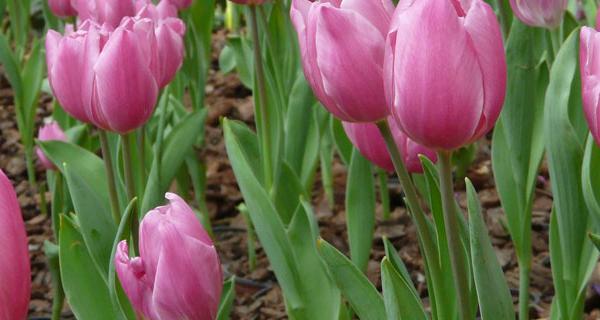Key points of Flower Management in White Dew season

How to manage flowers in White Dew season? Flower management is very important in White Dew season. White Dew should start to control the amount of water for flowers to avoid rotting roots, stop fertilization in time so as not to affect the overwintering of branches and leaves, and control light and pruning in time. In this way, flowers can survive the winter better in winter. Let's follow the editor to understand the matters needing attention of flower management in White Dew season.
1. Timely lighting:
Some light-loving woody flowers that bloom in summer, such as jasmine, mulberry, Jiuli incense, etc., should still be placed in sunny places, so that flowers receive sufficient light, promote plant branches to mature, so that they can survive the winter safely.
Potted flowers that bloom before and after the Spring Festival, such as rhododendron, magnolia, cyclamen, poinsettia, crab claw orchid, etc., should also be placed in a sunny place to receive full sunshine, otherwise the flowering may be delayed or will not bloom.
Generally, foliage plants are more shade-tolerant and can provide appropriate light.
2. Timely use of water and fertilizer:
Timely start to control the amount of water for flowers to avoid rotting roots, stop fertilization in time so as not to cause excessive growth of branches and leaves, and affect flowers overwintering.
Flowers that bloom before and after the Spring Festival, such as cyclamen, orchid, crab claw orchid, rhododendron, etc., have passed the dormant period and began to enter the peak growing season, so fertilizer and water management should be strengthened from autumn to Spring Festival before flowering, and appropriate application of phosphorus and potassium fertilizer can be added to facilitate the formation of flower buds.
3. Pruning timely:
In addition to the flowers that bloom in early spring, most flowers such as jasmine, crape myrtle and pomegranate can be pruned and shaped in autumn, so as to reduce the nutrient consumption of plants in winter and increase the number of potted flowers in the following year. Remove diseased, withered, over-dense and overgrown branches during pruning to prepare potted flowers for overwintering.
4. Breeding in time:
With the temperature getting lower and lower in autumn, some biennial flowers, such as pansy, carnation, melon-leaf chrysanthemum and hollyhock, are good times to sow seeds. Pay attention to watering after sowing to keep the soil moist.
In addition, some woody flowers are suitable for cutting in autumn, such as rose, geranium, jasmine and so on.
When the perennial root flowers such as peony and peony grow densely, the ramet should be propagated in time.
Flowers that bloom before and after the Spring Festival, such as Fengshou, tulips, Zhu Dinghong, etc., should be put on the pot as soon as possible.
5. enter the room in time:
It can be treated separately according to different varieties of flowers.
Warm flowers and trees such as Fusang, poinsettia, begonia, cyclamen, jasmine, colourful grass and tortoise back bamboo should be moved indoors when the temperature is 10 degrees Celsius.
Hanging orchids, one-leaf orchids, asparagus, goose palm wood and rubber trees should also be moved indoors when the temperature is 5 degrees Celsius.
Related
- What if the leaves of potted flowers turn yellow?
- Florescence Control of several Flowers
- Anti-freezing technology and post-freezing nursing technology of flowers
- What is the classification of flowers? What are the common methods of flower classification?
- Prevention and control of alkali and acid damage of flowers in courtyard
- Technology of Anti-freezing and restoring growth of Flower seedlings in greenhouse and greenhouse
- How does flower fertilization not hurt the root? Fertilization technology of flowers
- Key points of disinfection in flower greenhouse
- Several pesticides that are banned or used cautiously in flowers
- How to fertilize the flowers that watch the leaves?



